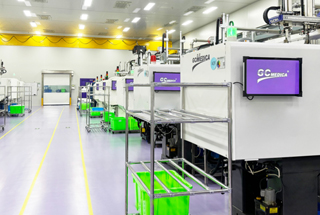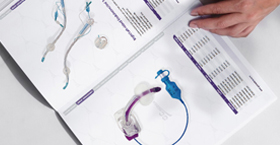Surgical Light Handle Covers: A Comprehensive Guide to Sterile Protection for Surgical Lighting
Surgical light handle covers are protective, often disposable, sheaths designed to fit over the handles of surgical lights. Made from medical-grade materials such as polyethylene or other high-quality plastics, these covers act as a barrier against pathogens, bodily fluids, and other contaminants. Their design is tailored to provide a secure fit on various surgical light models, ensuring that the covers remain in place throughout procedures.
Mar 25,2025
Light Handle Cover: A Comprehensive Guide to Medical-Grade Protection for Operating Rooms
A light handle cover is a disposable or reusable protective sheath that is placed over the handle of surgical lights. Made from high-quality medical-grade materials such as PE (polyethylene), these covers are designed to resist tearing, puncturing, and contamination. They provide an effective barrier against pathogens and bodily fluids, reducing the risk of cross-contamination during surgery.
Mar 25,2025
Disposable Bronchoscope: Enhancing Patient Safety and Operational Efficiency
In modern respiratory care, bronchoscopes are indispensable tools for diagnosing and treating various pulmonary conditions. Traditionally, reusable bronchoscopes have been the standard; however, the emergence of disposable bronchoscopes offers significant advantages in terms of patient safety and operational efficiency.
Mar 24,2025
Single-Use Bronchoscope: A Cost-Effective Solution for Modern Respiratory Care
In the realm of respiratory care, bronchoscopy stands as a pivotal procedure for both diagnostic and therapeutic purposes. Traditionally, reusable bronchoscopes have been the standard; however, the advent of single-use bronchoscopes (SUBs) presents a compelling alternative, particularly from a cost-effectiveness perspective.
Mar 24,2025
Heated Insufflation Tubing: A Comprehensive Guide to Innovations in Minimally Invasive Surgery
Heated insufflation tubing is a specialized medical device designed to deliver warmed gas, typically carbon dioxide, into the surgical cavity. Unlike traditional tubing, heated versions prevent the cooling of insufflated gas, maintaining a consistent temperature throughout the procedure. This temperature stability can help reduce the risk of hypothermia, improve tissue perfusion, and enhance overall patient comfort during MIS.
Mar 24,2025
 Strong OEM/ODM Capabilities
Strong OEM/ODM Capabilities GCMEDICA provides OEM/ODM services for numerous well-known medical device brands around the world.Explore now
GCMEDICA provides OEM/ODM services for numerous well-known medical device brands around the world.Explore now




 GCMEDICA is committed to building a digital workshop to improve efficiency, enhance quality, reduce costs and increase flexibility.Explore now
GCMEDICA is committed to building a digital workshop to improve efficiency, enhance quality, reduce costs and increase flexibility.Explore now

 Français
Français Español
Español






